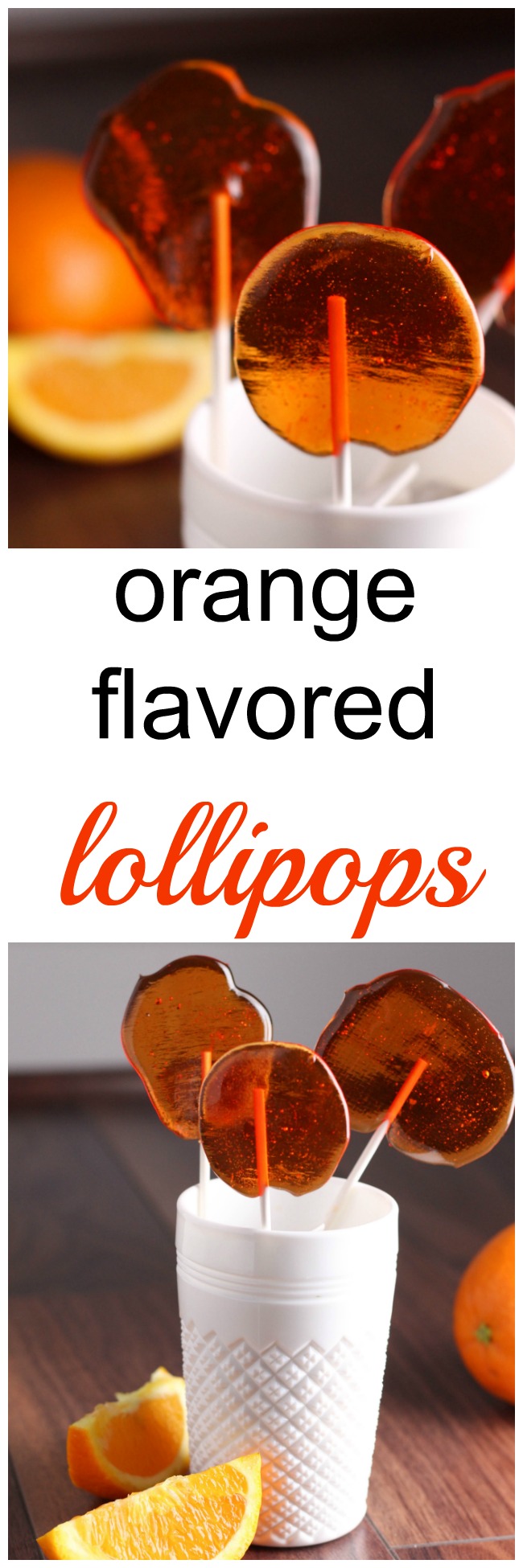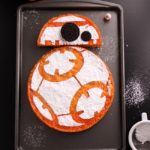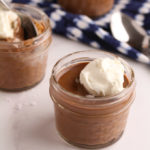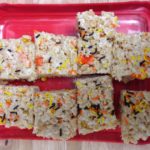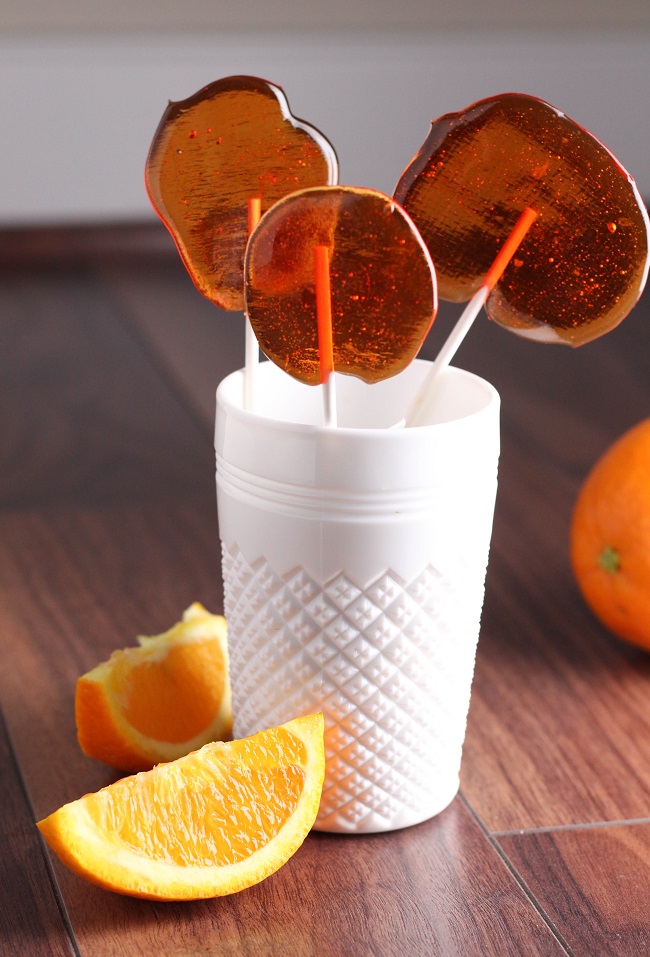
Friends, I made orange flavored lollipops! Yes, I could get lollipops for free from the bank. Yes, I could buy a giant bag from CVS for $2. But where is the fun in that?! Part of the joy of getting into the kitchen is that there’s opportunity for curiosity, for trying new things, and for making stuff for myself. I love making things that I usually only buy. And, beyond that there’s there’s just the awesome magic of food science that transforms regular ingredients into treats for my sweet tooth.
And, I’m not kidding. Sugar, water, and some flavoring can come together to make lollipops?! The science behind how heat can make sugar into something molten, and then rock hard, is truly amazing. The other cool food science thing I learned was about cream of tartar. I looked up lots of lollipop recipes before making my own, and some recipes called for cream of tartar and some didn’t. Why?! Isn’t cream of tartar just for snickerdoodles and egg whites?! Usually yes. In those cases cream of tartar stabilizes a light airy structure, but when added to sugar it does something totally different. The cream of tartar behaves as an interfering agent and keeps the sugar crystals from bonding, which prevents crystallization. No sugar crystals means our finish products are clear stained-glass looking lollipops. Amazing, right?! I just love cooking because it’s incredible what one ingredient can do!
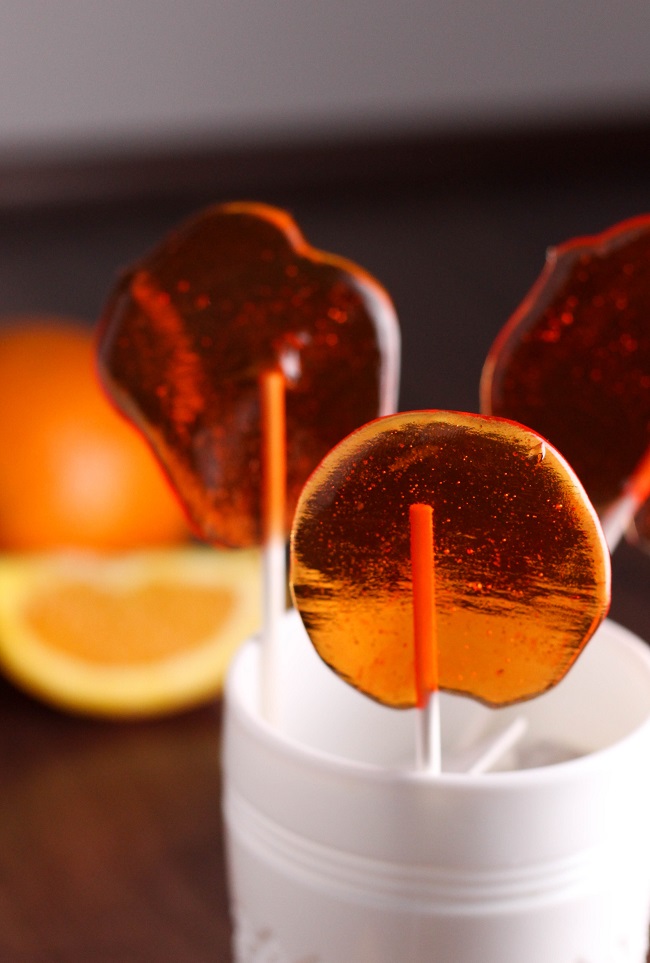
Now, the ingredients for this recipe are cheap, easy, and familiar. But, I do highly recommend you indulge in one piece of cooking equipment and get a candy thermometer. You don’t need it, but it will make everything easier. A candy thermometer clips to your pan and measures the temperature as you go. I used my thermapen (which I love) but it does not clip on so I took the temperature at regular intervals. This made me a bit nervous because I didn’t want to accidentally over heat the sugar or touch the tip to the bottom of the pan and get a false reading. Save yourself the headache and buy a candy thermometer (about $8 from Amazon). Alternatively, you can use the water test (instructions here) if you’re already in the middle of making this and don’t have a thermometer.
Probably evident from these photos is that I didn’t use a lollipop mold to make these. You totally can use one, but I like the crazy wobbly shapes of each individual lollipop. I’ll admit, I did end up making some monster lollipops, some pops oozed together making tandem two-stick pops, and some were long and skinny, and some short and fat. But most looked like lovely orange clouds and were perfect sized. Most importantly though, who cares about look because the flavor was delicious! I chose to make orange flavored lollipops because it was the most appealing extract available at my grocery store (sorry for the false advertising, there’s no real orange in these). But you can use whatever extract you like best – chocolate, coffee, strawberry, coconut. And you can use whatever color you like too. Simple substitute your preferred extract and colors for the ones listed in the recipe below. Honestly, you can’t go wrong because in the end you’ll have yummy, sweet lollipops and you didn’t have to go out to get them.
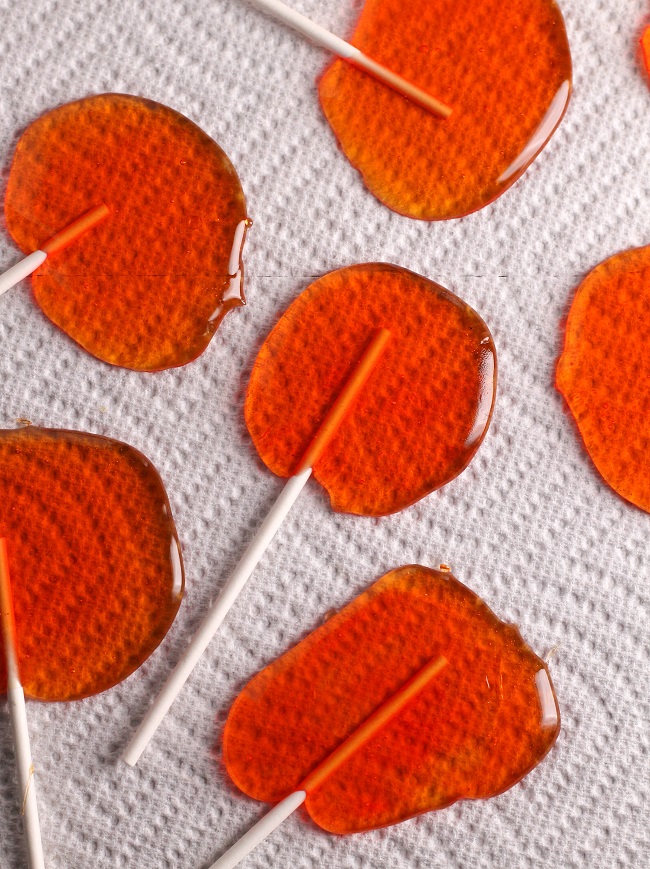
Adapted from BBC Good Food.
 Messy level: Preparing the lollipops is really easy and makes no mess. It’s actually making the lollipops where things get tricky. Without a mold it’s possible for spills and giant lollipops that run together. It’s not the worst, but not very pretty either. My main tip is that when you’re done preparing the lollipops, put some water back in the pan and heat it up. Everything that hardened to the pan will soften and it will be much easier to clean!
Messy level: Preparing the lollipops is really easy and makes no mess. It’s actually making the lollipops where things get tricky. Without a mold it’s possible for spills and giant lollipops that run together. It’s not the worst, but not very pretty either. My main tip is that when you’re done preparing the lollipops, put some water back in the pan and heat it up. Everything that hardened to the pan will soften and it will be much easier to clean!
- 2 cups/500 grams sugar
- 1 teaspoon cream of tartar
- 7 oz/ 200 ml/ 1 cup minus 2 tablespoons water
- 2 teaspoons orange extract
- yellow and red food coloring
- lollipop sticks (about 2 dozen)
- Line 2-3 baking sheets with parchment paper or a non-stick baking mat.
- Put the sugar, cream of tartar, and water into a saucepan. Stir to make sure everything is well mixed. Then heat on low until the sugar has completely dissolved.
- Once the sugar has dissolved, clip on your candy thermometer. Turn up the heat to medium and bring to a boil. Let the sugar boil undisturbed (don't stir! It makes crystals!) until it reaches 305-310ºF/151-154ºC. This is called the hard crack stage. [Alternatively drop a bit of sugar into very cold water. If it sets hard it's ready]
- Remove pan from the heat and stir in the orange extract. Drop in a few drops of yellow food coloring and then a few drops of red. Swirl it together until you have the color you like and it is mixed throughout.
- Using a metal spoon, spoon out 1 tablespoon sized dollops of sugar mixture on to your prepared baking pan.
- Press a lollipop stick into each dollop of sugar mixture. Spin the stick in the mixture if you need it to be better coated. Alternatively, spoon a little more mixture on top of the stick to secure it.
- If the sugar mixture gets too hard, put the pan back over the heat and warm in gently until you can spoon it again. [However if it's too hot and runny then the sugar won't set so keep an eye on it]
- Let the lollipops cool for about 15-20 minutes. Then eat!
- For clean up, put everything metal back in the pan. Cover with water and bring to a boil. Everything should then easily clean off!

